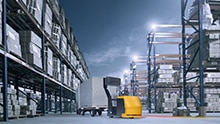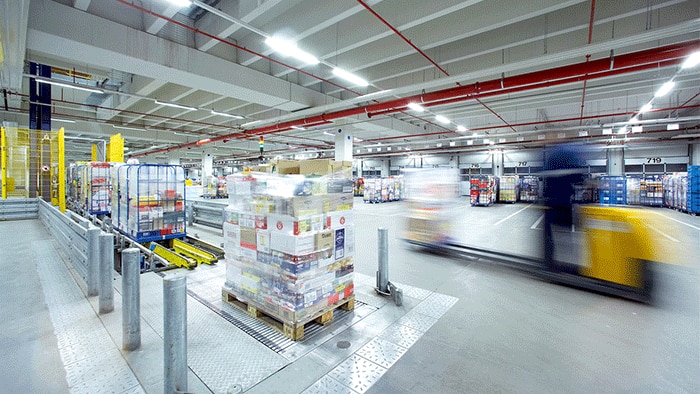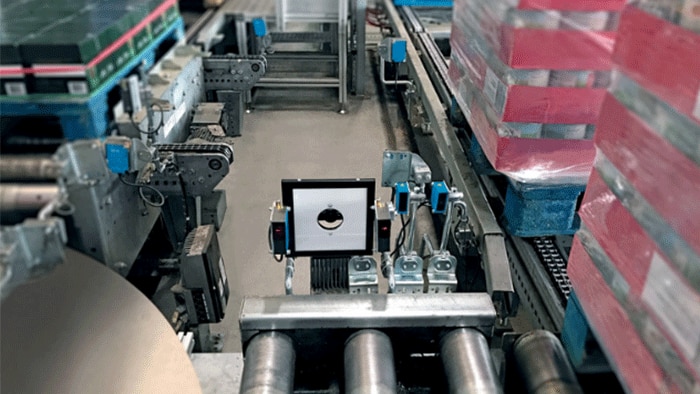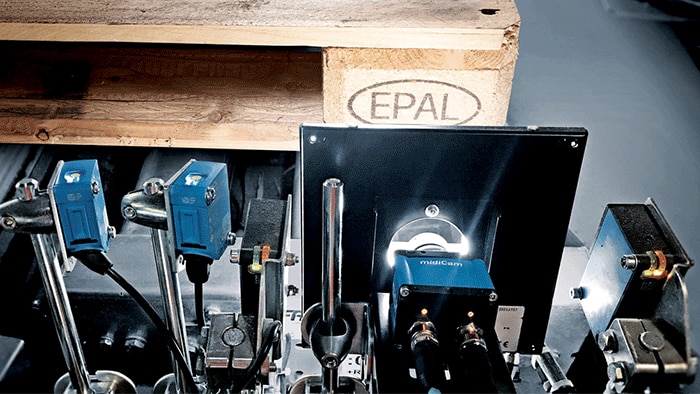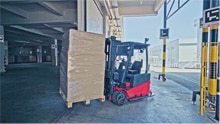Optimized processes ensure smoother workflows, increase productivity and have a positive impact on a company’s success. EDEKA knows this all too well. As a representative of the food and beverage industry, the company recognizes significant potential for improvement when it comes to receiving goods, for example: Here, the goods are delivered by truck on pallets from a wide range of manufacturers – including pallets that are subject to the pallet deposit and pooling system. The manual classification of deposit pallets when receiving goods requires a high use of resources and therefore involves a potential for error that should not be ignored. EDEKA entered into an innovative partnership with SICK in order to avoid the resulting costs, save resources, and simultaneously increase process quality and transparency. The Pallet Classification System (PACS) for automatic pallet classification was developed in close cooperation.
Pallet classification made easy: How EDEKA is optimizing the receipt of goods with the help of SICK
Deposit or no deposit – that is the question
As a major player in the German retail sector, EDEKA is pursuing an ambitious goal: By 2025, the Group aims to invest 450 million euros in the automation, innovation and expansion of its warehouses in the regions of northern Bavaria, Saxony and Thuringia. These plans are already taking shape at the Berbersdorf site. Among other things, this applies to receiving goods, especially the classification process for delivered pallets. In addition to deposit and pooling pallets such as EPAL or CHEP, there are also pallets that are not subject to the deposit system. Until now, in order to avoid incorrect deposit payments to suppliers, each incoming pallet has been classified manually according to its deposit relevance, which can be recognized by the color and the label/branding on the pallet block – an error-prone, time-consuming and resource-intensive process.
The optimization potential for EDEKA is obvious: “It is important for us to know whether the pallet has a deposit or not. At the moment, the check is carried out manually by an employee when receiving goods. Our joint project with SICK will change this in future, as the pallet type will be recorded automatically.”
Cooperation from A to Z
In addition to the design and development of the Pallet Classification System, the joint project also involves the corresponding installation in the existing plant: Two color cameras for image acquisition, a light barrier arrangement for triggering the pallet and a controller for processing the data and executing the pre-trained AI-based neural network. An optional third color camera can be mounted above the conveyor system, for example, to document the load on the pallet.
Here’s how it works
During automated pallet transport, the two color cameras capture the labels/branding on the outer blocks of the pallets and record RGB images of them. With the help of a pre-trained artificial neural network, the system uses these branding images to determine the pallet type, e.g. EPAL, CHEP or UIC. As the brandings often differ greatly in quality or usage, such deviations are taken into account in the training process in order to increase the robustness of the evaluation of different pallet types. In addition, the system can be retrained with additional pallet types thanks to the integrated neural network – for a higher recognition success rate and thus simple, flexible adaptation to customer requirements.
Close cooperation pays off
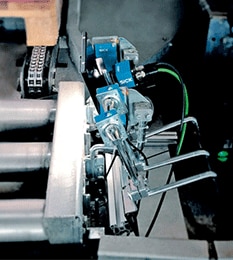
And that leads to optimized work processes: The automatic pallet classification during operation unburdens staff so they can concentrate on processes with higher added value. Pallet types such as EPAL, CHEP and UIC no longer have to be checked manually – classification takes place quickly, automatically and reliably. At the same time, the transparency of the pallet stock is increased. This is because the recorded data is transmitted to a higher-level warehouse management system via a defined interface on SICK’s own controller, which is precisely tailored to EDEKA’s requirements. This means that it is always clear how many deposit-relevant and non-deposit-relevant pallets have been received, and incorrect deposit payments are a thing of the past.
The success speaks for itself
The partnership with SICK enables EDEKA to fully exploit the optimization potential of its processes for receiving goods. Despite the complex requirement posing many challenges, by working in close cooperation it was possible to develop a standard for pallet classification that is being continuously expanded, for example with regard to the transverse conveying of pallets. Further EDEKA warehouses are to be equipped with PACS, which further underlines the constructive cooperation between the two companies.
Read more
Automation in intralogistics: Perfecting the automated forklift truck
